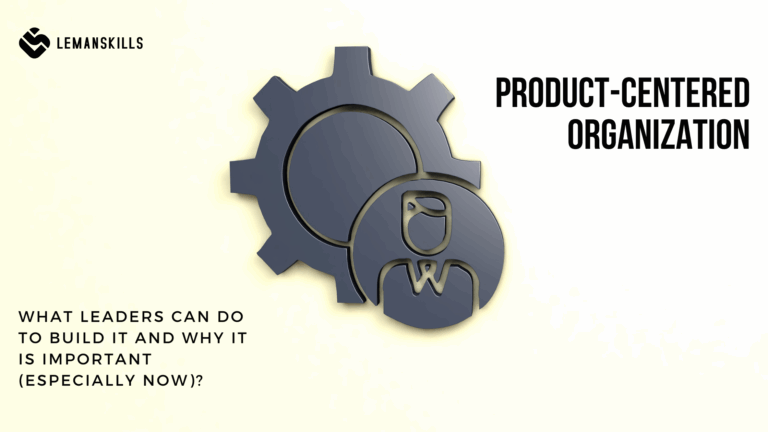There are thousands of articles, books, podcasts and YT videos in the subject: “how to change your life”. A lot of them have its ultimate goal to magically change everything, starting with losing a lot of extra weight, through finding a perfect partner, to having a perfect job. And ideally all of those things should happen overnight.
But we are adults, and even if we love good stories with a happy ending, those things never happen just like that. All we can do is to work on them to happen. Make conscious decisions about using our time, spending it well – regardless of what “well” means to each of us.
In this article I would like to share 10 things that works for me in making my life better every single day. What makes me feel that I spend my time well, that I choose what serves me the best and what helps to have this though in my head at the end of the day: “yes, it was a good day”.
1. Getting up at 6AM every day
First live changer from my list. Getting up at 6AM every single day, not sleeping off on the weekends made my day better structured than before. I discovered that 5AM club is too early for me, and I’ve decided to try 6AM and it appeared perfect. I never had problems with getting up early, but I missed the regularity and I needed to change that. After making this change, I found out how many things I can do before starting my business day and it is beautiful. Yes, it can be harder in the fall and winter, when the days are short and many hours during the day is dark or gray outside (it sure is in Poland), but it is worth it.
When you are wondering if this is something you can do, think about one thing that you always say you don’t have time for? This is the thing that you can do when you get up earlier. It doesn’t necessarily be 6AM – it can be 5AM, 5:30AM or 7:30AM. It all depends on your life, all the things that you need to do during the day, so it’s your choice. Try 15 minutes earlier than usually for a start. And do it every day, sleeping off on the weekends it the worst thing you can do to your body, because you don’t give yourself a chance to regulate your day cycle.
2. Morning workout and meditation
Since I work with different time zones in my job and I have naturally more energy in the morning than in the evening, I do as many things as I can in the first half of my day.
I built a habit of 5-minute meditation by sticking it to my morning workout, which was already there. You can read more about building good habits by sticking them together in a great book by Charles Duhigg “The Power of Habit”.
I do six workouts every week, with one rest day somewhere in between, depends on the weather and other plans I have. After that I meditate for 5 minutes – it is the maximum time that I can focus on my brain for now. It gives me power and energy for the rest of the day, and I don’t need to worry about this area after a hard workday when I need to rest.
3. Short journaling with 2 gains lists
I discovered that writing in a journal, even if it’s just one page per day, give me a structure that I need for my thoughts or experiences from the previous day. And I added additional thing after reading a great book by Ben Hardy and Dan Sullivan “The Gap and The Gain”. The exercise is really simple.
Make a list of gains from yesterday. Write down all the things that you achieved, even if it’s something super small, like reading 5 pages of a book, waking up 15 minutes earlier than usually or taking your vitamins. Every single thing matters. Recognize yourself for everything you do every day.
Then make a list of 3 gains that you would like to achieve today. It can be connected to all areas of your life: mental, physical, digital or financial well-being, relations, work, professional development etc. Choose 3 things, no more, no less, and focus on achieving them – you’ll check the accomplishments with yourself the next morning.
You can also do this in the evening (the authors are talking about evenings, after finishing the current day and before starting the next one in the morning), but mornings are just working better for me. Choose by yourself, spend 5 minutes on that – it will be worth it.
4. Having daily / weekly / monthly / yearly goals
I am a really structured person. I love making plans, paths how to get to the goals, and I hate when people are messy and indecisive.
I discovered in another Ben Hardy’s book “Being Your Future Self Now” the idea of having 5-year goals, when you choose 3 areas of your life or 3 elements you would like to achieve and you do everything to get to them. I connected it with my daily goals (gains) and I use the monthly list of experiences (the idea of a Polish author Edyta Zajac – you can find her work in PL HERE) for years now and it works brilliantly for me. So I connected all the dots and I create different goals for different periods of time, with being mindful about my bigger 5-year goals. That way I make sure that I spend my time wisely, and not wasting it for the things that are not bringing me closer to achieving what I want. By making that change, you can do more with less.
5. Having slots for deep work
Being distracted is one of the worst habits of our times. We have millions of information that come to our brains daily, messages, notifications, calls, Teams or Slack chats. There are so many of them that we can’t focus to finish one thing. Multitasking is a myth, there is no such thing. We can shift our attention from one thing to another, sometimes very quickly, but we cannot do two things at the same time with the same amount of mindfulness.
That’s why I chose to book time in my calendar to have slots for deep work, based on a tips from another great book “Deep Work” by Cal Newport. I have those every day, I almost never plan anything else during this time, no meetings, no calls etc. I take my daily goals and I cover them, one by one, using the time in the best possible way. That way I can do more with less (working smarter, not harder).
6. Eating healthy
Changing diet was not only for my body but also for my brain to be healthy and focused. I gave up on meat, 90% of candy (sometimes I have a piece of homemade cake), processed food, most of the alcohol. That way, I take care of myself better, I have more energy from good sources of food, and I make sure that I’m not treating my body as a trash can. By having the biggest meal not later than around 1-2PM, I sleep better as well, since by body isn’t focused on digestion at night. You can try cutting one bad thing from your diet and start from there. You will see results very quickly.
7. Taking care of boundaries
Mental well-being is an area where we take care of our minds, thoughts and needs. I wrote more about types of well-being HERE. Boundaries are necessary to take care of ourselves, even if we didn’t do it before. Saying “no” to things that aren’t our responsibility, to the things that are not bringing us closer to achieving our goals, or those that other people think are “normal” is more than fine. Always doing it with a good intention, not to hurt anybody, but to protect yourself is a wise thing to do.
Turning off notifications on your smartphone is also a boundary – of a distractor in your deep work time i.e. Your intention here is to protect your time and your needs, communicate it clearly, so people around you understand why it is important. And that it is not against them, to hurt them or push them away. This is the story about you, your needs, your goals. Even if the environment doesn’t understand it at the beginning and is surprised or unhappy, keep going. They are going to get used to this new you, after you make the change.
8. Reading as much as possible
Lifelong learning is one of my top 5 values. I teach others and to teach them well, I need to know more, choose what’s useful and give them an essence of what really matters. Reading is one of my favorite ways of expanding my knowledge, connecting the dots between every thing that I learn, to find structure and meaning in what I have in my brain.
It doesn’t really matter what you read. It can be a developmental book, a paper, an article, a piece of documentation, a study, a novel. All is good, because you choose to train your brain, to be focused on a story or knowledge you would like to absorb.
9. Having time for close people
I wrote lastly about this statement that we are an average of 5 people we spend the most of our time with. And I believe this. Sometimes we don’t have a chance to choose who they are (i.e. our parents), but we can choose how much time we spend with them and pick what is worth the investment.
I talk to my parents every day, write with my friends, meet them regularly. I share thoughts, photos, links to something interesting to read. I try to be mindful about the time with my husband, even if he tells me that I’m always super busy and don’t have time for him. Use the quality time, even if it is just 15 minutes. We all need people in our lives, sometimes just to be with them and to know that they are there when we need them, and vice versa. But not all of them equally – try to change the way to think about yourself in the context of others. Who are good influence and who not so much?
10. Going to sleep around the same time every day
The same way I treat getting up, I treat going to sleep. I need to sleep at least 7 hours per day, with less my brain is not functioning very good, I feel like on a constant hangover. Having structure around this is super important, since you need to rest, after the whole day of being active. Recharge, prepare yourself for the next great day you have in front of you. That change is going to help your mind and body to work more efficiently and to reach your full potential.
The bottom line
We are all so busy. One of the biggest excuses I hear every day. I don’t have time for this, I don’t have time for that.
But you are the person who makes all the decisions. So why not to decide better what you do with you time every day? I gave you 10 things that work for me, personally. I keep them adaptive and flexible since the world around us is changing all the time. It works now, but maybe I would need to change something in the next few weeks or months, and that’s perfectly fine.
Take your life and do something meaningful with it. It will be worth to try the change.




